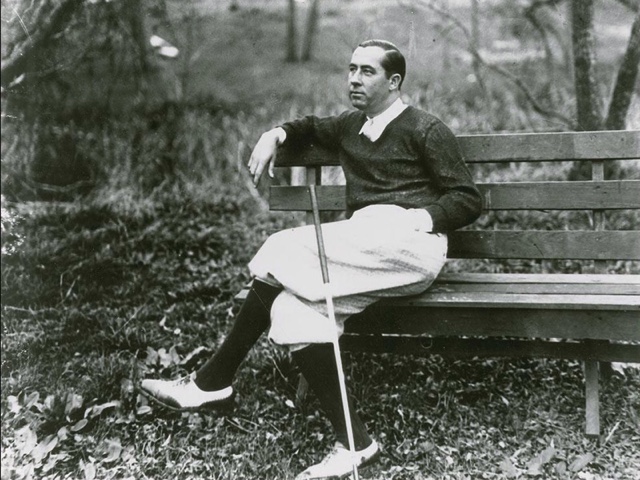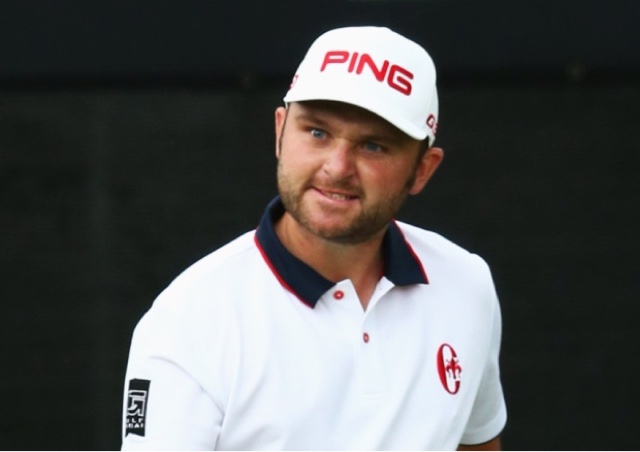Putting is the great equalizer. Good putting covers a multitude of sins in other areas of the game. I tend to agree with Raymond Floyd, who felt the most important shot in golf was the six foot putt. In golf, it almost inevitably comes down to making putts if you are going to score. And there are often times when I resent the importance of putting; especially when I have those days where I might have out-played my opponent from tee to green, but been beaten because he putted better than I.
Once again, I find Bobby Jones had some excellent insights into putting; the part of the game that has been called "the game within a game." In Golf is my Game, Bobby wrote:
"Often--too often, I think--putting has been referred to as 'a game within a game', implying that in some way the putting stroke is, or should be, different from that employed in playing other golf shots. I do not think this is true, and I know it is anything but a useful conception for the learning golfer. Somehow it conveys the notion that on the putting green, at least, one should be able to reduce the simple physical act into a precise routine of infallible accuracy.
To make a completely honest confession, I have myself been the victim of this delusion, and can be thankful that it only arrived after my serious playing days were over, and so caused me merely a few temporarily painful experiences in the Masters Tournament.
It is remotely possible, I concede, that my jittery putting in Augusta may have been some early manifestation of the nerve affliction from which I am now suffering, or some alteration of my attitude towards tournament play because of my earlier withdrawal from competition. It is my own conviction that my putting troubles began when I started to struggle for a precision in my putting stroke which I would never have considered possible in any other department of the game.
The fact is that the direction of the stroke in putting is so much more important than the exact alignment of the face of the putter. Any well-made golf club will seat itself in an approximately correct position when it is rested on the turf behind the ball. The wiggling and twisting some players employ in an effort to make the alignment precise only serve to set up so much rigidity in the player that a smooth, rhythmic stroke becomes impossible. I think the very height of folly, or of imposition upon the credulous golfer, is represented by the spirit levels and sighting devices now being offered for sale as aids in putting.
The putting stroke should be thought of as just another golf stroke, except that it ought to be the simplest. The same requirements are to be met here as in driving from the tee. The posture at address should be comfortable and relaxed, the swing should move freely back and forth beneath a stationary head, and the blow should be directed along the line upon which it is intended that the ball should begin its travel.
I regard the putting stroke as so truly a miniature golf stroke that I think it is a mistake to try to exclude any members of the body from participation in the action. In other words, I do not believe in trying to hinge the stroke upon either wrist, or in trying to restrict the movement to any sort of fixed base. Naturally, the shortest putt requires only the gentlest tap, actuated only by the hands; a putt slightly longer may require that the arms should swing a bit; and the long approach putt may need a stroke long enough to induce a little movement in the hips and legs.
In putting, and in chipping too, it is important that the backswing should be long enough. Nothing can be worse around the greens than a short, snatching stroke. I have had some real masters of the short game tell me, and I heartily agree, that it is most helpful to swing back a little farther than needed on the first few chips or putts of any round. In this way they can be certain of a smoothly-floating club so necessary for a delicate touch."
As I read this, I find myself thinking of Ben Crenshaw's smooth, flowing stroke. Watching Ben swing the putter we see no effort to do anything other than smoothly stroke the ball along the intended line. He would seem to putt exactly as Bobby Jones recommended; nothing forced, or controlled, just a swing of the putter head. Bobby continues, by writing:
"Actually, this touch is the key to good putting. Very few putts of any length are dead straight, so that no line is right except for one speed; and the player who tries to straighten even the shortest putts by charging the hole will miss a lot of those coming back.
I will guarantee that more putts under twenty feet--the kind you like to hole--will go in, and three-putt greens will pop up less often, if the player will forget about the precise alignment of his putter and learn to adjust his touch so that he may always keep his ball above the hole and always reach the hole with a dying ball. A ball dying on a slope above the hole often topples in, and always stops close; nothing is more disheartening than to watch a ball barely miss the lower side of the hole and then curl down the slope some five or six feet. And remember, even on short putts, that the hole is of full size for the touch putter, while it presents only an inch or so to the charger who has to hit the exact centre of the cup.
I like to think of putting as very much like rolling a golf ball from my hand across a green towards a hole. I know I should then not worry too much about the backswing of my arm. I think it would instinctively take care of itself. So in putting, I don't like to worry too much about the alignment of my putter at address or about my backswing, except that it be long enough. The picture I want uppermost in my mind is of the line I want the ball to travel on, and of how hard I want to hit it."
Having given his view of how best to approach the task of putting, Bobby once again returns to the subject of whether or not putting is really a game within a game. I think it perfectly addresses the issue. He writes:
"There occurs to me one other reason for saying that putting is a game within a game. It makes it much easier to say or to think, "I played very well, but I couldn't putt", or "He's a fine golfer, but he can't putt." I know--I have done it myself--but how can a man play golf well or be a fine golfer if he can't putt?
One thing is certain: you won't win any medals or many friendly bets if you can't get the ball into the hole. If you are not reasonably good at it, you had better learn."
So what can we learn from this information from Bobby Jones? He did not believe that putting is a game within a game, as is often attributed to him. He did not believe in being overly precise about putting. He believed the putting stroke was just a simple golf swing, and that touch was the most important thing to learn.
Having tried virtually every putter known to man--I've got about thirty of them still around the house--and just about every conceivable grip, stance, and stroke; I might just give up and try getting back to just trying to roll the ball on the right line, at the right speed. If nothing else, it will save me buying any more putters.






























